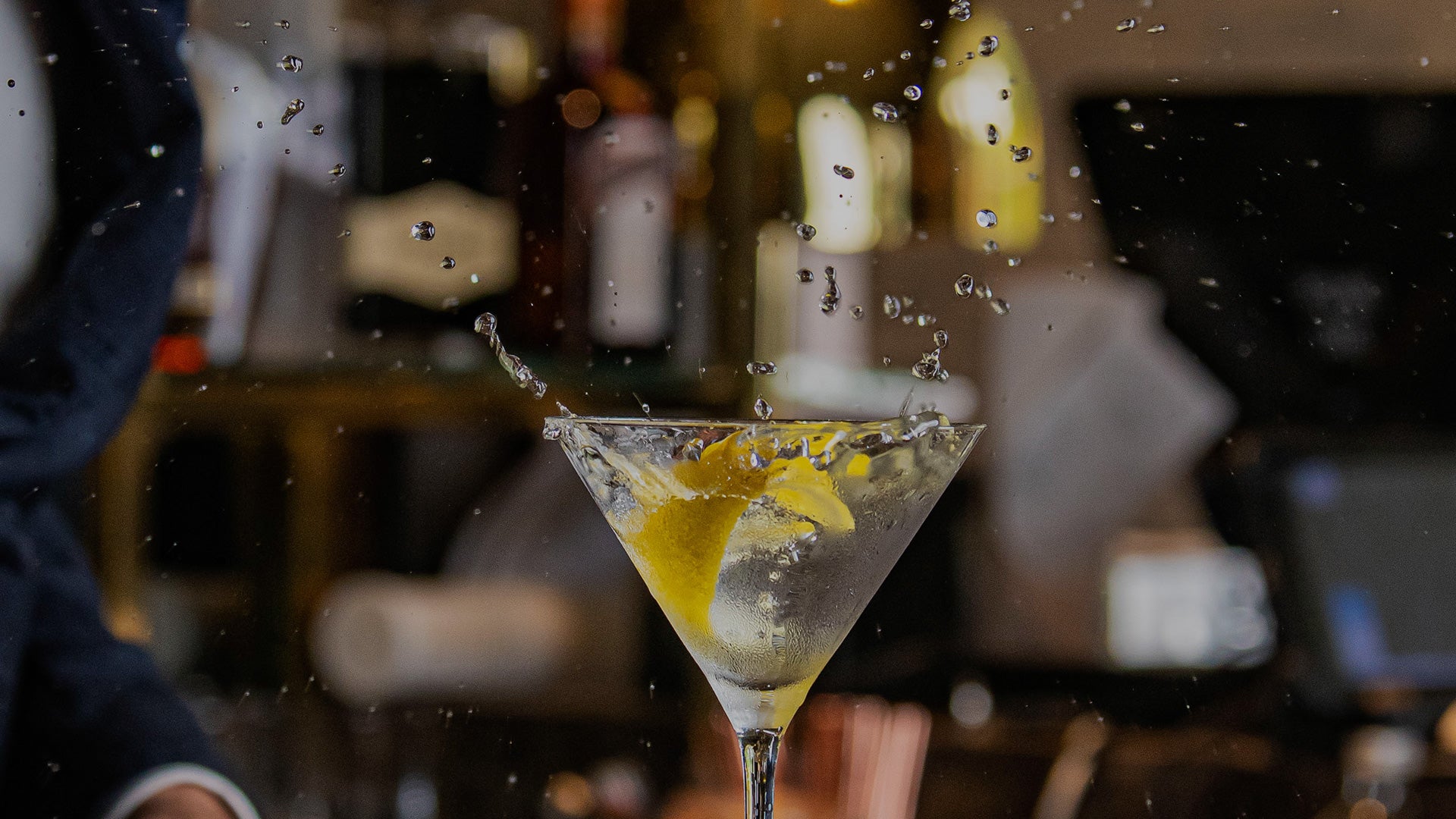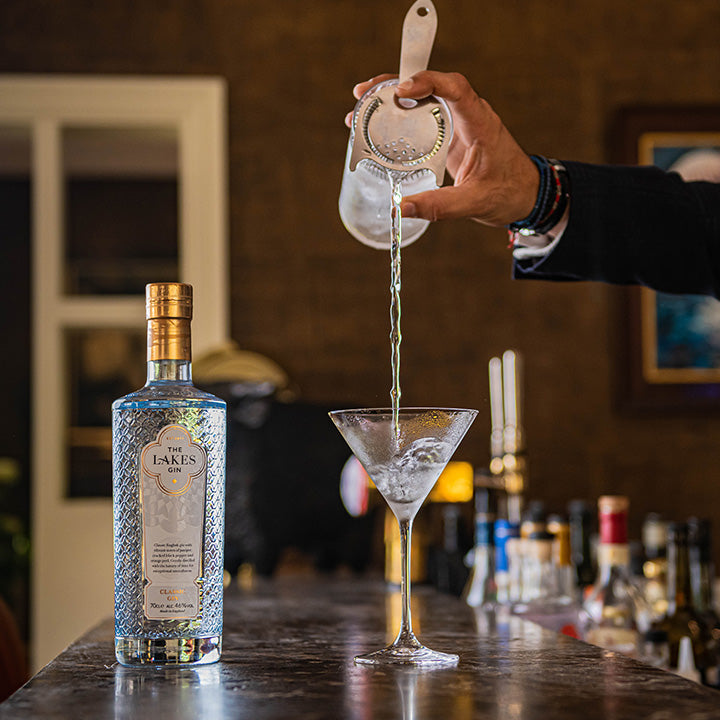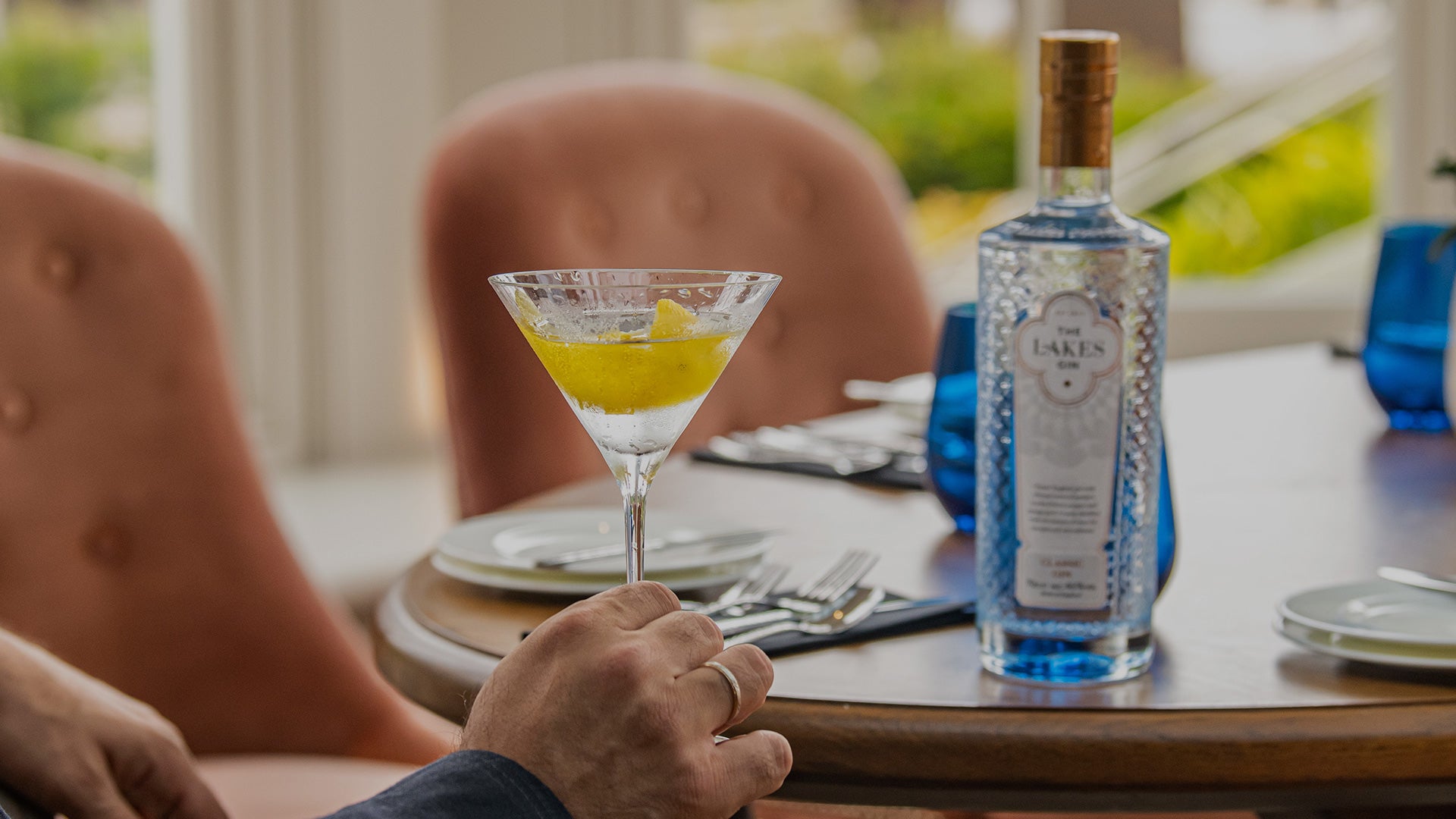
The Gin Martini
Like the Lakes Gin, the perfect Martini is an exercise of flavour precision, ensuring every nuance is pitch-perfect and crystal clear on the palate. With only three ingredients – London dry gin, vermouth, and garnish (traditionally a green olive) – the complexity comes from the myriad of different ways to blend the flavours.
Shaken or stirred? Both actions cool and dilute your cocktail. Shaking vigorously aerates the drink, causing tiny bubbles and often a cloudy appearance to the ingredients. Bartenders would advise simply stirring clear liquids to retain that crystal clear texture and appearance.

How to make a classic Gin Martini
UNDERSTATED ELEGANCE
We recommend beginning with a classic balance of 50ml of The Lakes Gin and 20ml of Noilly Prat Vermouth.
Mix in a cocktail maker full of ice, stirring rather than shaking, until very cold.
Strain into a pre-chilled coupe glass and garnish with a Spanish Queen, or Castelvetrano green olive (something with a firm bite) before enjoying the dry flavours of oak, spice and wine with gin notes in the background.
If you prefer strong citrus and juniper notes in your Martini - with just a hint of oak, spice and wine - then why not try tweaking the ratio of the spirits. Combine 60ml of The Lakes Gin and 5ml of Noilly Prat Vermouth stirred over ice and strained, creates a delicious, fresh drink that can be garnished to your taste.

The Breakfast Martini
THE NEW BLOODY MARY
Created by bartender Salvatore Calabrese, this is a delectable cocktail invented in 2000 at the Library Bar at the Lanesborough Hotel in London.
A must-try for any Martini lover, pour all the ingredients - 50ml of The Lakes Gin, 15ml of Grand Marnier, 20ml of Vermouth, 10ml of lemon juice - into a shaker with a bar spoon of marmalade and ice.
Shake hard, fine strain into a pre-chilled Martini glass and garnish with an orange twist.

The Pink Gin Martini
BRIGHT AND ZESTY
Adding an aesthetic aspect to your drink, the choice of garnish also enhances flavour through the aromatic nature of the fruit or herb.
Garnish is traditionally lime or lemon, usually a citrus based fruit, to complement the botanicals in the gin. Floral based gins might use fresh edible flowers, or cucumber and a savoury, herbal gin may use rosemary or even ripe tomato to lift the flavour.
The floral nature of Fever-Tree Mediterranean Tonic best complements our classic London Dry style Lakes Gin. The blend of essential oils from flowers, fruits and herbs make it a wonderfully delicate, floral tonic, complementing the botanicals in the gin, while a slice of lemon or pink grapefruit highlights the zesty notes.
Finally, use a long barspoon or stirrer to gently combine the gin, tonic and ensure even distribution of flavour and icy temperature throughout.
Taste, balance and quality all come in to play and to complete the perfect Lakes Gin and Tonic, add a large lemon slice to complement the balanced flavour profile of our juniper-forward gin.

The History of The Gin Martini
As with many of the traditional early cocktails, the origins of the drink are often unclear. There is some speculation that the “martini” derived from Martini & Rossi, one of the original Italian brands of vermouth. However, this specific Martini & Rossi vermouth wasn’t detailed in the earliest written recipes, and there is further speculation it may originate from Martinez, a town in California, which claimed to be serving a version of this cocktail in the 1860s. The Martinez Cocktail was in fact listed in one of the earliest bartending guides published, shortly followed by another recipe in Harry Johnson’s Bartender’s Manual (1888), which offered a version slightly closer to our modern day formula.
These original recipes were much sweeter, with a mix of bitters, syrup, and fruit liqueurs combined with the classic combination of gin and vermouth. The martini we know today has developed progressively drier, with a straight mix of gin and vermouth using a London Dry Gin – hence the term ‘dry martini’.
Create your own perfect gin and tonic at home
Discover The Lakes Gin Collection
Sign up for more
Join our online community and receive more cocktail recipes, special offers and new releases, plus receive up to 20% off your first order.
Welcome to The Lakes
Join The Lakes to save 10% on your first online order, receive peronsalised communication & exclusive access to new releases.
© The Lakes Distillery, 2023
UK Registered Office: The Lakes Distillery Company plc, Low Barkhouse Farm, Setmurthy, Cumbria CA13 9SJ.
US Registered Office: The Lakes Distillery Company USA Inc, 1209 Orange Street, City of Wilmington, County of New Castle, Delaware, 19801.
VAT Number: 122612261
Company Registration Number: 07769363


























